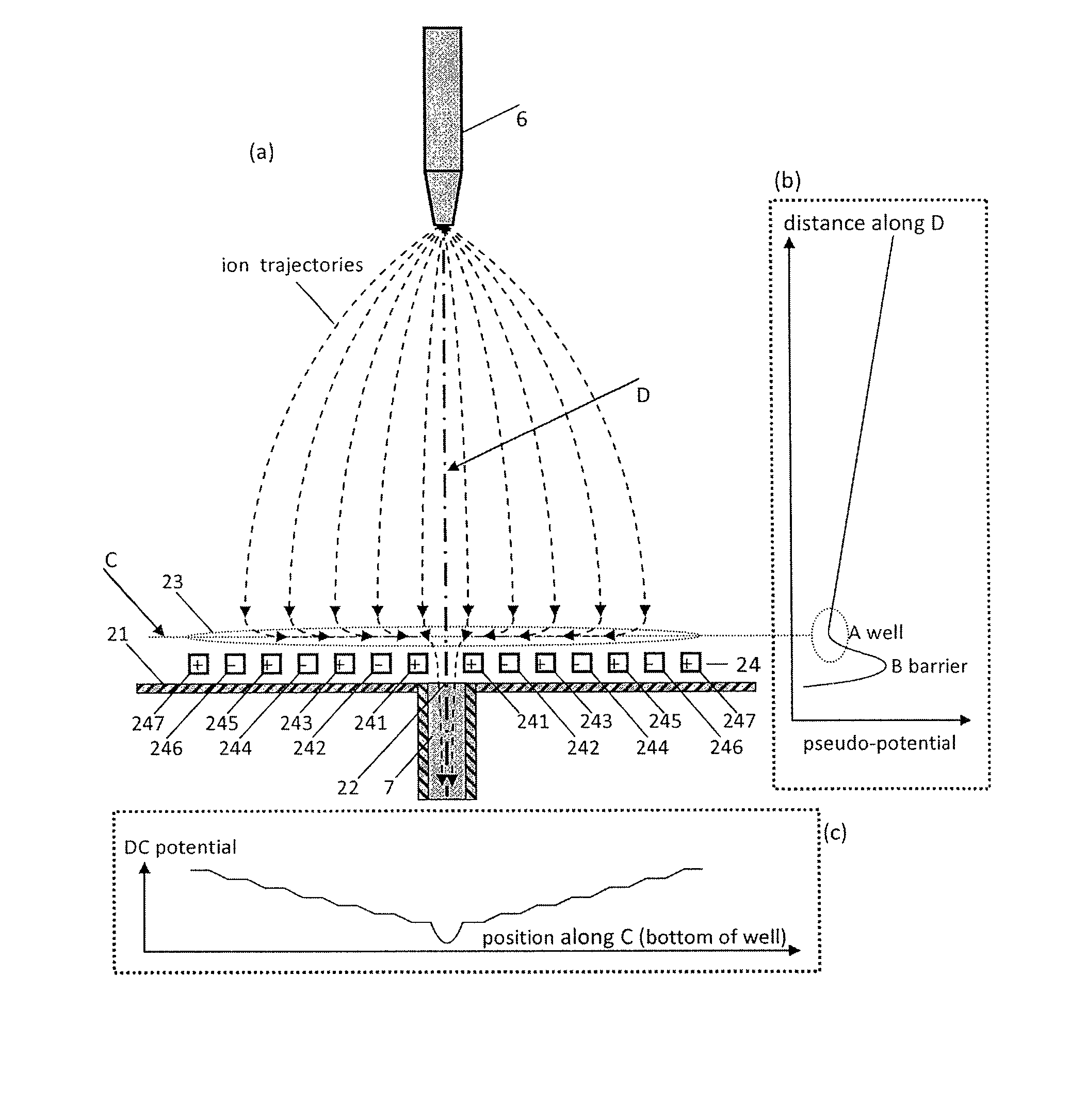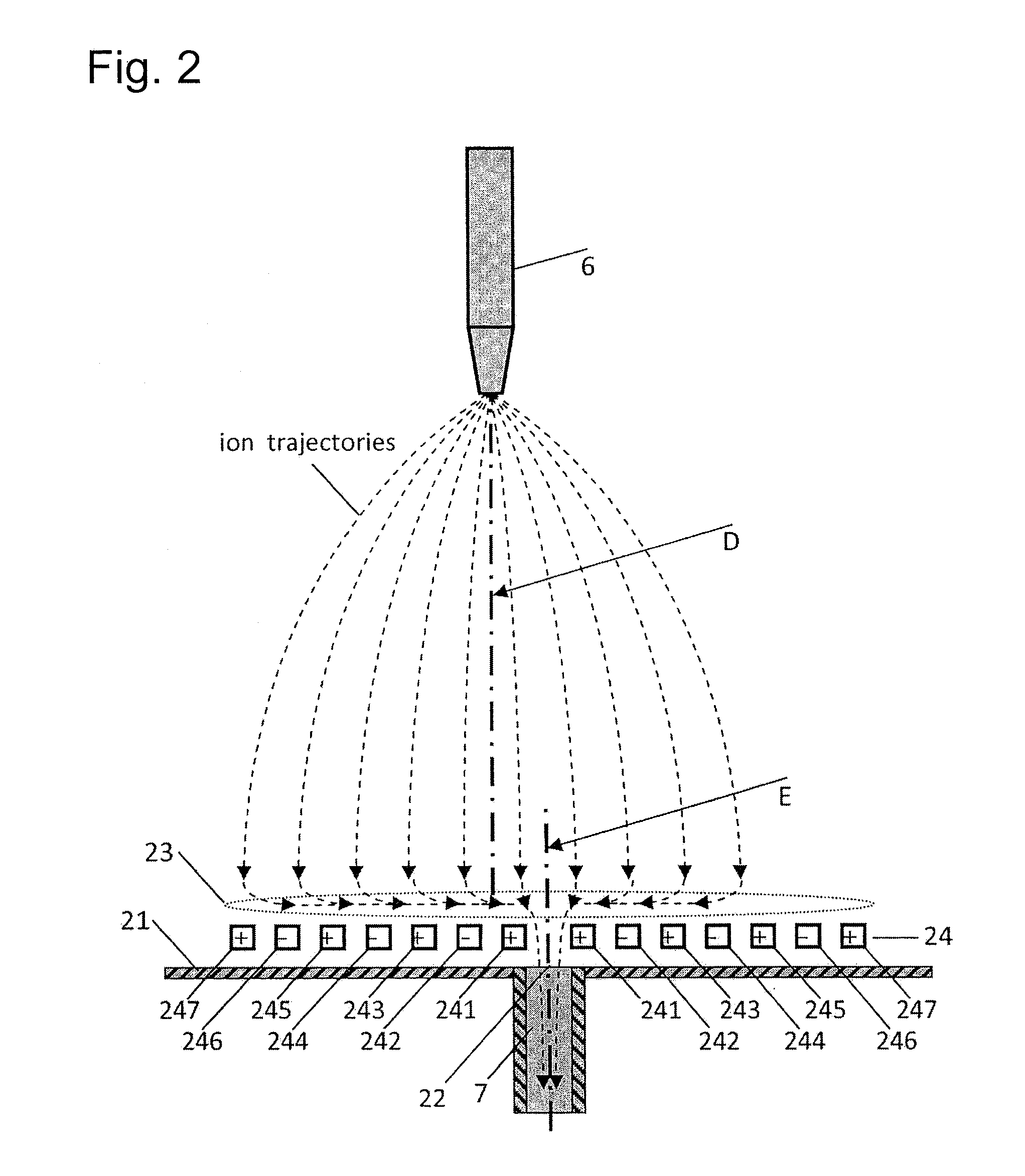Charged-particle condensing device
a condensing device and charged particle technology, applied in the field of mass spectrometers, can solve the problems of reducing the utilization efficiency of formed ions, and reducing the speed of v
- Summary
- Abstract
- Description
- Claims
- Application Information
AI Technical Summary
Benefits of technology
Problems solved by technology
Method used
Image
Examples
Embodiment Construction
[0075]The present invention aims to improve the coupling efficiency of an atmospheric pressure ion source to a mass spectrometer or to a mobility spectrometer by providing electric fields that act as a condensing device for charged particles before they are fed to the spectrometer. A complete such system is illustrated with all its essential parts in FIGS. 8 and 9.
[0076]A mass spectrometer that is equipped with an atmospheric pressure ion source is illustrated in FIG. 8. There is an ionization chamber (1) that features a nozzle (6) into which molecules of interest are introduced dissolved in a liquid sample or in the effluent of a liquid chromatograph, not shown. From this nozzle charged droplets emerge from which ionized molecules evaporate as well as neutral molecules that either stay uninvestigated or must be ionized by electric discharges or laser interaction. This evaporation of droplets is enhanced when the droplets pass into the usually heated so-called desolvation pipe (7). ...
PUM
 Login to View More
Login to View More Abstract
Description
Claims
Application Information
 Login to View More
Login to View More - R&D
- Intellectual Property
- Life Sciences
- Materials
- Tech Scout
- Unparalleled Data Quality
- Higher Quality Content
- 60% Fewer Hallucinations
Browse by: Latest US Patents, China's latest patents, Technical Efficacy Thesaurus, Application Domain, Technology Topic, Popular Technical Reports.
© 2025 PatSnap. All rights reserved.Legal|Privacy policy|Modern Slavery Act Transparency Statement|Sitemap|About US| Contact US: help@patsnap.com



